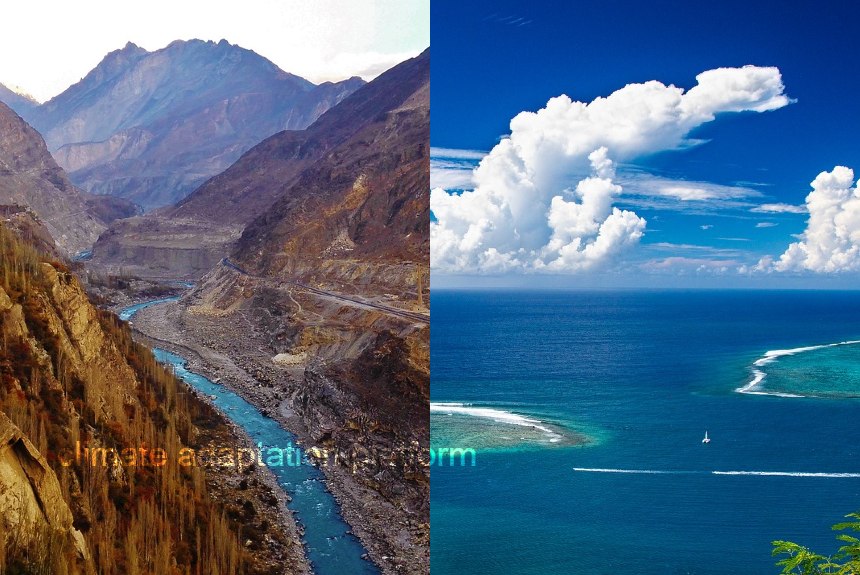The year 2022 is yet another reminder that the Asia-Pacific is the world’s most disaster-prone region, according to a UN ESCAP report.
“The major disasters of 2022 fell across the development spectrum, from floods in Afghanistan, Australia, Bangladesh, India, Pakistan and Thailand, drought in China, Kiribati and Tuvalu, typhoons Megi and Nalgae in the Philippines, heatwaves in India, Japan and Pakistan to earthquakes in Afghanistan, Fiji and Indonesia. Floods were the deadliest, accounting for 74.4 per cent of regional disaster events and 88.4 per cent of total deaths globally” (2022: A year, 2023).
The Pacific has experienced its third consecutive La Niña event from August to October 2022 – the first “triple-dip” La Niña of the 21st century. The warming from climate change has jacked up La Niña’s effects and created extreme weather events across the world:
- Pakistan’s record floods in 2022 affected 33 million and claimed 1,739 lives;
- Bangladesh and India floods in the same year also impacted 7.2 million and 1.3 million people, respectively. The same year, in March and April, just a few months before Pakistan’s devasting floods, the country and India experienced record temperatures.
A weather event attribution study by scientists from multiple countries examined whether climate change has anything to do with Pakistan’s extreme rainfall and floods (Climate change likely, 2022).
Based on the average rainfall data and trends from climate models, they find that rainfall intensity is between 50 to 75% if the climate had not warmed by 1.2°C.
The authors warn that future temperatures of 2°C or higher could significantly increase the number of extreme rainfall events, bringing even more catastrophic results.
Aside from the threats of extreme rainfall events and floods, the Asia Pacific countries face other climate change impacts such as rising sea levels, more frequent storms and landslides, escalating heatwaves and droughts, and acidifying oceans and coral bleaching.
Unlike developed countries with higher adaptive capacity and adequate resources, the developing countries in the Asia Pacific must both cope with climate change effects and, at the same time, improve their standard of living.
Asia Pacific GHG emissions are also growing. Emissions from 49 countries in the region accounted for more than half of the global greenhouse emissions in 2020. Their current NDCs also project a 16% increase from 2010 levels, rather than the 45% reduction needed to meet the 1.5°C warming limit.
The increasing impacts of climate change in the region mean it needs to step up investments to decarbonize and protect infrastructure and people from climate change impacts.
The United Nations estimates that developing countries in the Asia Pacific must invest between $160-$340 billion in adaptation by 2030. However, actual financing is 5 to 10 times below, and the gap is widening.
To help boost the needed financing in the region for mitigating and adapting to climate change, the Asian Development Bank, knowns as the Asia Pacific climate bank, launched seven financing innovations:
- Innovative Finance Facility for Climate in Asia and the Pacific (IF-CAP).
“IF-CAP is a multi-donor financing facility that will use guarantees for ADB’s sovereign loan portfolios for leverage to accelerate billions in much-needed climate finance – a program never before attempted by a multilateral development bank.”
- Energy Transition Mechanism (ETM).
“ETM is a scalable, collaborative initiative that uses concessional and commercial capital to retire or repurpose existing coal and other fossil fuel plants on an accelerated schedule, replacing them with clean power capacity.”
- ASEAN Catalytic Green Finance Facility (ACGF).
“Owned by ASEAN members and ADB, supported by development partners, and managed by ADB, the ACGF helps governments in Southeast Asia prepare and finance infrastructure projects that promote environmental sustainability and contribute to climate goals.”
- ADB Ventures.
“ADB Ventures is an investment platform that supports and invests in early-stage companies offering bold technology solutions with the potential to drive climate actions and contribute to green and resilient economic growth in emerging Asia. Governments, top institutional funds, and other link-minded investors back the facility.”
- ADB Frontier.
“ADB Frontier is a newly launched initiative that will support and invest in small and medium-sized enterprises (SMEs) in frontier markets. It focuses on firms with strong potential to drive growth, create jobs, and advance climate action and gender equality. It addresses a gap in the market for risk capital in Asia and the Pacific’s frontier markets through equity investments, debt financing, and technical assistance.”
- Asia Pacific Project Preparation Facility (AP3F).
“AP3F is a multi-donor trust fund that helps ADB’s developing member countries prepare commercially feasible infrastructure projects under public-private partnership models. It promotes sustainable, resilient, and inclusive infrastructure development with a strategic emphasis on climate change. AP3F was established and has been supported by the founding financing partners: the governments of Australia, Canada, and Japan. The Republic of Korea joined the group this week as the newest member.”
- Asia-Pacific Climate Finance Fund (ACliFF).
“ACliFF is a multi-donor trust fund that supports the development and implementation of financial risk management products that can help unlock capital for climate investments and improve resilience to climate change impacts.”
Sources:
Seven Funding Innovations to Boost Climate Finance. (2023 May 4). ADB. Retrieved from https://www.adb.org/news/features/six-funding-innovations-boost-climate-finance
2022: A year when disasters compounded and cascaded. (2023, January 4). UN ESCAP. Retrieved from https://www.unescap.org/blog/2022-year-when-disasters-compounded-and-cascaded
Climate change likely increased extreme monsoon rainfall, flooding highly vulnerable communities in Pakistan. (2022 September 14). Word Weather Attribution. Retrieved from https://www.worldweatherattribution.org/climate-change-likely-increased-extreme-monsoon-rainfall-flooding-highly-vulnerable-communities-in-pakistan/
New UN report reveals that climate pledges by countries in the Asia-Pacific are off track with the 1.5°C pathway. (2022, November 2). UN ESCAP. Retrieved from https://www.unescap.org/news/new-un-report-reveals-climate-pledges-countries-asia-pacific-are-track-15degc-pathway



Leave a Reply